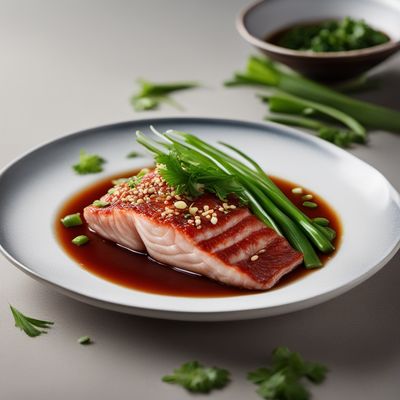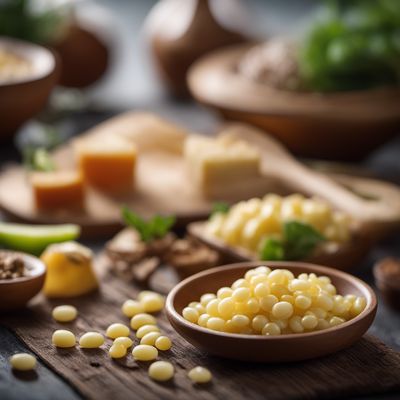
Ingredient
Spinach-type leaves
The Verdant Powerhouse: Spinach-type Leaves
Spinach-type leaves, including spinach, Swiss chard, and beet greens, are highly nutritious and versatile ingredients. They have a tender texture, vibrant green color, and a slightly bitter or earthy taste. These leaves can be enjoyed raw in salads, sautéed as a side dish, or incorporated into various recipes for added flavor and nutrients.
Origins and history
Spinach-type leaves have a long history of cultivation and consumption, dating back to ancient civilizations such as the Persians, Greeks, and Romans. Spinach, in particular, gained popularity in Europe during the Middle Ages and was introduced to the Americas by Spanish explorers. Swiss chard and beet greens have also been used in Mediterranean cuisines for centuries.
Nutritional information
Spinach-type leaves are rich in vitamins A, C, and K, as well as minerals like iron and calcium. They are also a good source of dietary fiber and antioxidants. With their low calorie content and high nutrient density, spinach-type leaves are a valuable addition to a balanced diet.
How to select
When selecting spinach-type leaves, look for vibrant green leaves that are crisp and free from wilting or yellowing. Avoid leaves that appear slimy or have signs of decay. Opt for organic or locally grown options whenever possible to support sustainable farming practices.
Storage recommendations
Spinach-type leaves can be easily grown in home gardens or containers, making them an accessible ingredient for amateur gardeners. Choose a sunny spot with well-drained soil and sow the seeds according to the specific plant's instructions. Regular watering and proper care will ensure a bountiful harvest.
Preparation tips
To maintain the freshness of spinach-type leaves, remove any damaged or wilted leaves and store them in a plastic bag or airtight container in the refrigerator. They can stay fresh for up to a week, but it is best to consume them as soon as possible for optimal flavor and nutritional value.
Substitutions
Spinach-type leaves can be used in a variety of dishes, including salads, stir-fries, soups, and smoothies. They can be enjoyed raw in salads or sandwiches, sautéed as a side dish, or added to pasta dishes and omelets for an extra boost of nutrients.
Availability
Spinach-type leaves are widely available in grocery stores, supermarkets, and farmers markets. They are cultivated in many regions around the world, including North America, Europe, and Asia.
More ingredients from this category
Recipes using Spinach-type leaves

Singaporean-style Grilled Fish with Spicy Sambal Sauce
Fiery Fish Delight: Singaporean-inspired Grilled Fish with Spicy Sambal Sauce

Bahamian Escovitch Fish
Tropical Delight: Bahamian Escovitch Fish with a Caribbean Twist

Bruneian-style Spicy Fish Soup
Fiery Delight: Bruneian Spicy Fish Soup

Huachinango a la Veracruzana
Veracruz-Style Red Snapper Delight

Pan-Seared Red Snapper with Lemon Butter Sauce
Zesty Lemon Butter Red Snapper Delight

Chinese Imperial-style Steamed Red Snapper
Imperial Dragon's Delight: Steamed Red Snapper Fit for Royalty

Spicy Malaysian Fish Curry
Fiery Delight: Spicy Malaysian Fish Curry

Indonesian Chinese-style Spicy Red Snapper
Fiery Fusion: Indonesian Chinese-style Spicy Red Snapper

São Toméan-style Fish Stew
Tropical Delight: São Toméan Fish Stew with a Twist


